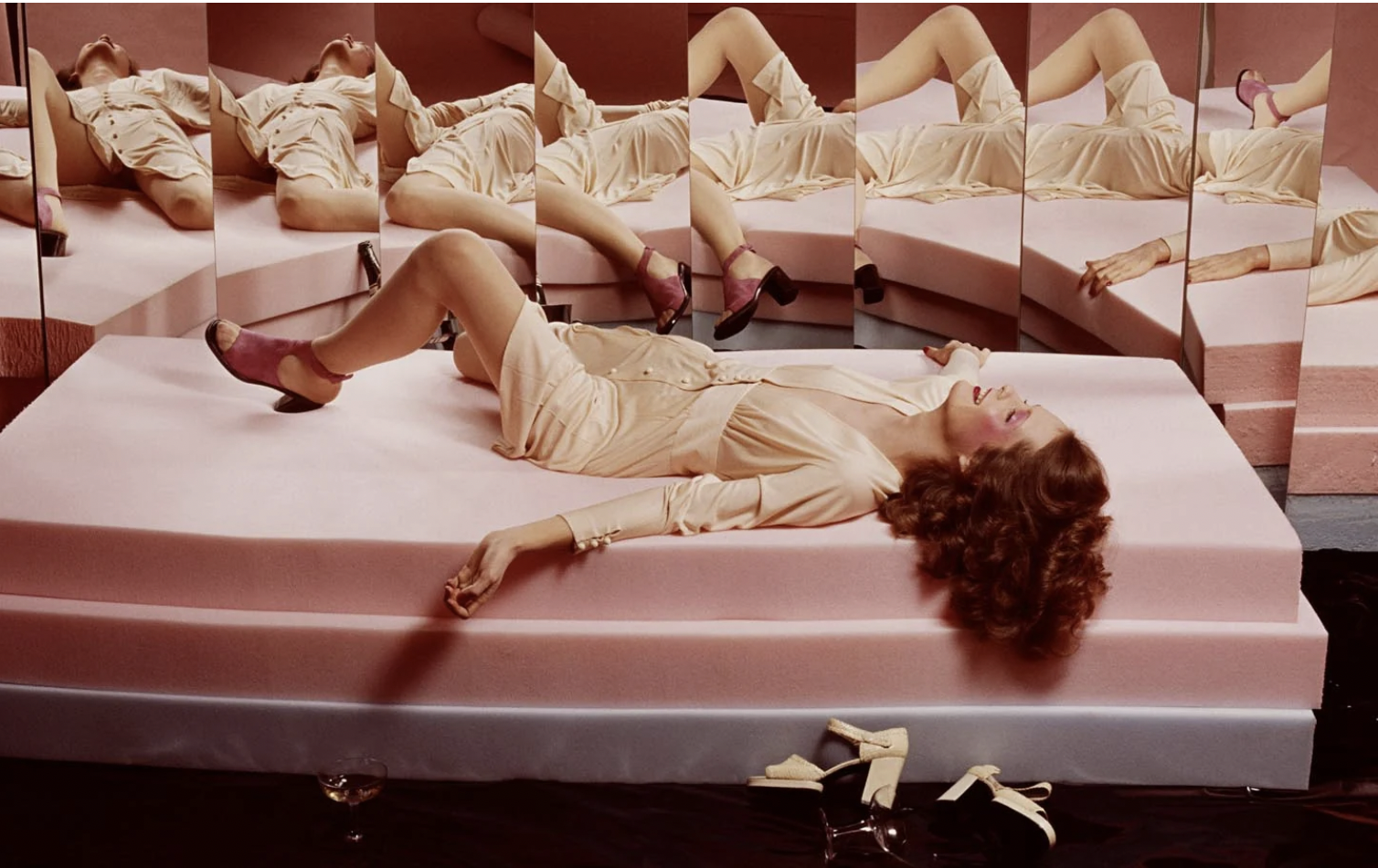Photography in the 1970s: New Movements & Artistics Experimentation
The 1970s was a defining decade in the history of photography. It was a period of cultural and social change in the world, and photography followed this trend by transforming itself into a contemporary art form. This decade saw the emergence of many photographic movements and styles, which have influenced photography today.
One of the most significant developments of this era was the rise of color photography. With technological advances and the growing popularity of color printing in magazines and newspapers, photographers were able to capture the vibrant energy of the world around them. Photographers such as William Eggleston, Stephen Shore, Joel Meyerowitz and Norman Parkinson embraced color photography and helped establish it as a legitimate medium of artistic expression:
UNTITLED, 1973
WILLIAM EGGLESTON
Norman Parkinson moved away from the more posed setting of the studio to shoot more dynamic and carefree outdoor images than his contemporaries, adding inventive humorous elements to his work. Indeed, he was one of the first to travel the world to capture images in exotic locations, which was relatively new at the time. Parkinson traveled the world shooting models and celebrities in places such as Bali, India, Kenya and the Caribbean. He was known for his creative and innovative approach to fashion photography, combining remote landscapes, local people and fashion props to create unique and unforgettable images.
One of the most striking features of Parkinson's travel photography in the 1970s was his use of bright colors and interesting textures to highlight clothing and fashion accessories. His images have a distinctive style that blends elements of fashion, travel and portrait photography.
Parkinson was also known for his ability to tell stories through his images, capturing the essence of where he was. His work has inspired many other photographers to follow in his footsteps and explore the world to capture unique and compelling images.
Parkinson's work is regularly published in magazines such as Harper's Bazaar and Vogue, earning him a reputation for producing images of great finesse, combining elegance with British charm. One of his most iconic images is Jerry Hall, Russia, Vogue (1975), where the model is seen standing on a pedestal in a red swimsuit and heels, about to dive:
In addition, the 1970s saw the emergence of new documentary styles in photography. Photographers such as Diane Arbus, Mary Ellen Mark and Larry Clark used their cameras to document the lives of people on the margins of society. Their images were raw, honest and often controversial. They captured moments of everyday life, often with a social and political perspective:
CONRAD - TAHITI, 1974
MARY ELLEN MARK
Fashion photography also underwent major transformations in the 1970s. The "Glam" style was popular and influenced a generation of fashion photographers. Photographers such as Helmut Newton, Guy Bourdin and Chris Von Wangenheim created provocative, sensual and often highly stylized images. Their images helped define the look of the time and have influenced fashion photography to this day:
FRANÇAIS VOGUE, 1972 MARS
GUY BOURDIN
This photograph is an iconic image of Chris Von Wangenheim. It depicts the famous American model Christie Brinkley in a provocative and suggestive pose, enhanced by the strong contrast between the deep blue of the wall and the model's fair skin. The photograph is taken from above, which accentuates the perspective and the feeling of power that emanates from the image.
The photograph was taken for Vogue magazine in 1977, at a time when Chris Von Wangenheim was at his peak as a subversive fashion photographer. It was one of the first fashion photographs to feature a model in a suggestive and sexually suggestive pose, which shocked and fascinated the public. Today, this photograph is considered a collector's item among fashion photography enthusiasts and is considered one of Chris Von Wangenheim's most iconic works:
Finally, the 1970s saw experimentation and the pushing of the boundaries of photography. Photographers such as Cindy Sherman and Robert Mapplethorpe pushed the boundaries of what was acceptable in photography.
Robert Mapplethorpe created provocative and sometimes controversial images of the human body. He became famous in the 1970s for his often shocking and scandalous photographs. He explored themes such as nudity and homoerotic sexuality, often using nude male models. His photographic technique was exceptional, with images often in black and white and working with light and shadow to give his photographs a sculptural quality. He was also acclaimed for his portraits of celebrities, artists and musicians.
Moreover, Cindy Sherman became famous for her self-portraits. Indeed, her photographs have challenged gender stereotypes and cultural norms, particularly those related to the image of women in society. Her self-portraits explored themes of identity, sexuality, representation and illusion, and opened up new avenues for conceptual art and postmodern photography:
UNTITLED (LUCILLE BALL), 1975
CINDY SHERMAN
In sum, the 1970s were an exciting time for photography. Photographers experimented with new techniques, subjects and styles to create images that changed the way we look at the world. Photographs from this era have left a lasting mark on photographic art and have influenced photographers today in their work.






